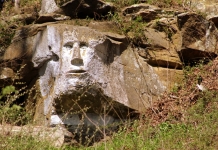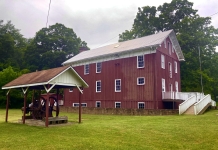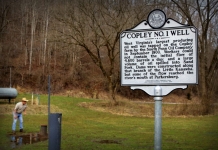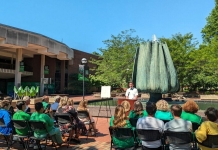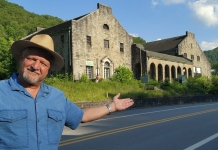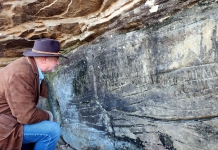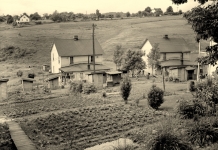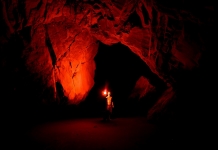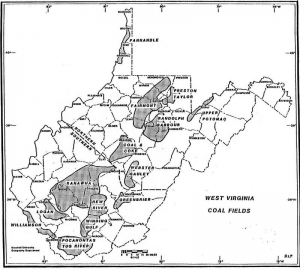
The Kanawha Coal Field is the name used to describe a coal-producing section of West Virginia that includes the following counties, in whole or in part: Kanawha, Putnam, Mason, Clay, Boone, Lincoln, and Nicholas counties.
Coal Seams in the Kanawha Coal Field
The principal seams that have been worked in the Kanawha Field are a part of the upper Kanawha Group and include the Stockton or Lewiston, the Coalburg, and the Winifrede. Most of the coal known as the Kanawha Splint Coal has been mined from the Winifrede, Coalburg, and Stockton-Lewiston seams. Lying below the Stockton, Coalburg, and Winifred seams is the softer Chilton coal, which reached its best development on the head of Coal River in Boone County. Above the Kanawha Group in the Allegheny series, the No. 5 Block coal is mined, mostly in eastern Kanawha and Clay counties.
Development of the Kanawha Coal Field
The Kanawha Coal Field is one of the oldest fields in West Virginia. The first commercial mining of coal in the Kanawha field resulted from the demands of the salt-making operations located at the Kanawha Salines. In 1817, David Ruffner began was the first to use coal to evaporate salt, the coal apparently coming from a mine opened the same year, by John P. Turner, located at the mouth of Burning Spring Branch, seven miles east of present-day Charleston, WV, on the north side of the Kanawha River.
Interest in the shipment of coal on the Kanawha via flatboats and steamboats, to markets in Cincinnati, began during the 1830s, following the incorporation of the first commercial coal company in the Kanawha Valley in 1834. In 1836 Colonel Aaron Stock opened a coal bank near the site of present-day Cannelton, WV, and soon afterward shipped coal via the Kanawha to either Cincinnati or New Orleans. This is said to be the first shipment of coal via flatboat from the Kanawha Valley.
In about 1859, Col. William M. Peyton of Virginia bought a large tract of land where Peytona is now located. Peyton's intent was to open a cannel coal mine and to ship the coal to market via the Coal River when water levels were sufficient. He managed to ship about 50,000 bushels of cannel coal prior to 1857. About 1853 or 1855 the property was purchased by New York and Company and "Western Mining and Manufacturing Company."
In 1849, a charter was granted to the Coal River Navigation Company and preliminary arrangements made to commence work on improving the Coal River. Work progressed slowly until 1856 and 1857, when nine locks and dams were completed. Eight were located on (Big) Coal River and Locks A on Little Coal River. Three or four of the locks and dams were damaged badly in 1858 by a period of high water. They were repaired but again in September of 1861, a huge flood damaged all of the river's locks and dams.
During the Civil War the companies operating at Peytona closed. The Peytona Cannel Coal Company was organized in 1865 and began operations at Peytona, on Coal River in 1866. The company was organized by Dr. Henry DuBois, of New Haven, Connecticut along with several New York capitalists. The old locks and dams on Coal River were rebuilt by the Navigation Company of Coal River and the river opened for the passage of traffic in the spring of 1867. By December of 1880, the Peytonna Cannel Coal Company had ceased operation because of a decline in the prices of coal and because of the large costs of maintaining the locks and dams.
Following the completion of the Chesapeake & Ohio Railway (C&O) in 1873, numerous mining operations opened in the Kanawha field. The mines at Cannelton, located on the opposite side of the Kanawha from the rail line, began sending its coal across the river to the railroad by ferry. Within three years of the line's opening, eighteen mining operations had opened along the C&O's rail line on the south side of the New and Kanawha rivers.
In 1893, the Kanawha & Michigan Railroad (K&M) completed a line between Charleson and Gauley Bridge, WV, allowing the development of additional mines along the north side of the Kanawha. From Charleston, the K&M line ran to Corning, OH, thus providing the Kanawha coal operators with access to the "western markets." In later years, the K&M built a five-mile branch line, the Smithers Creek Branch, from Cannelton and Smithers, WV, along Smithers Creek to Marting, West Virginia. The K&M line later became part of the New York Central System.
By 1906, 261 coal mines were operating within a 60-mile radius of Charleston, West Virginia, located in the Kanawha and New River coal fields.


